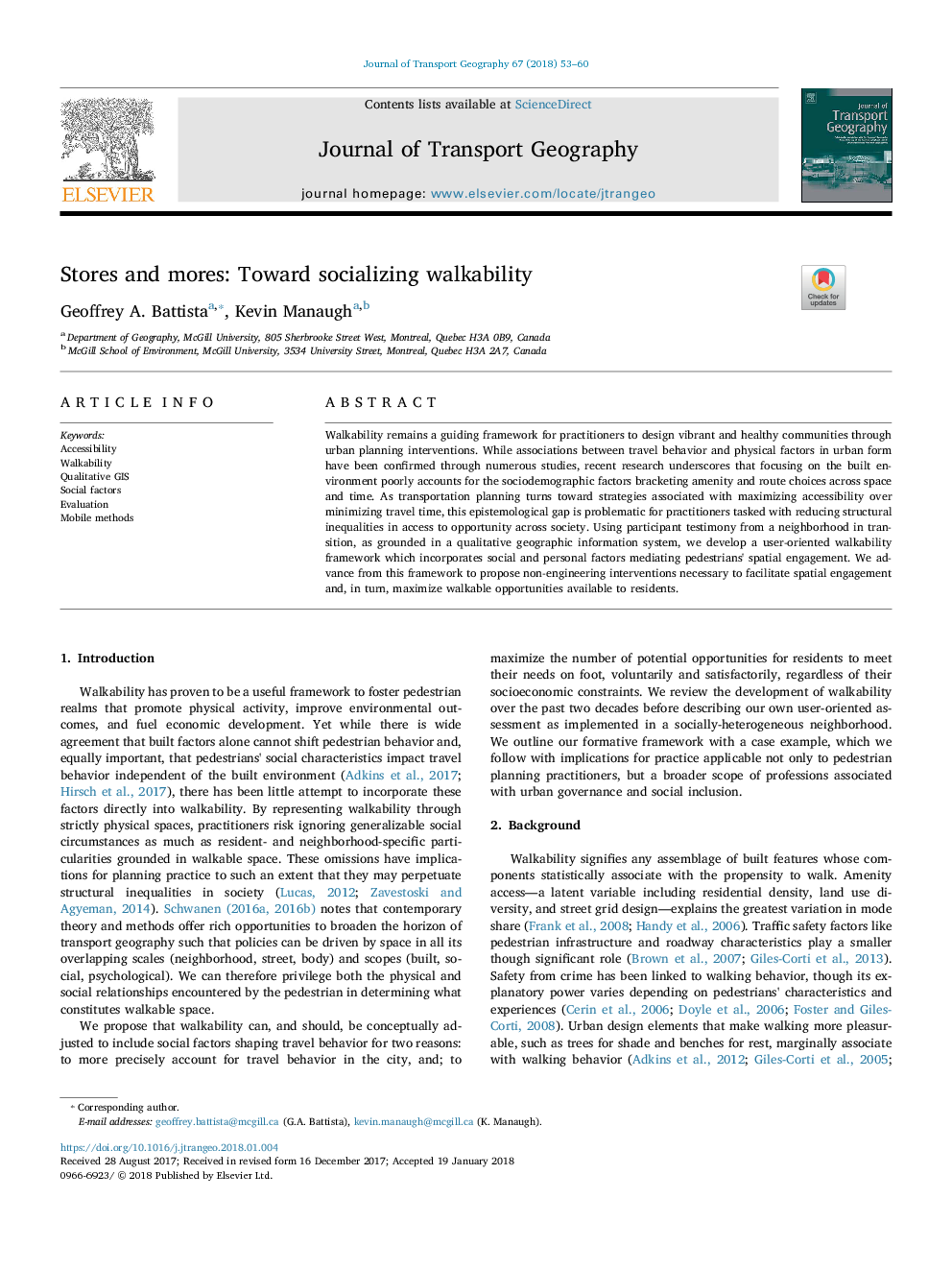ترجمه فارسی عنوان مقاله
فروشگاه ها و آداب و رسوم: به سمت پیاده روی اجتماعی کردن
عنوان انگلیسی
Stores and mores: Toward socializing walkability
| کد مقاله | سال انتشار | تعداد صفحات مقاله انگلیسی |
|---|---|---|
| 127927 | 2018 | 8 صفحه PDF |
منبع

Publisher : Elsevier - Science Direct (الزویر - ساینس دایرکت)
Journal : Journal of Transport Geography, Volume 67, February 2018, Pages 53-60
ترجمه کلمات کلیدی
دسترسی، پیروزی، سیستم اطلاعات جغرافیایی کیفی، عوامل اجتماعی، ارزیابی، روش های موبایل،
کلمات کلیدی انگلیسی
Accessibility; Walkability; Qualitative GIS; Social factors; Evaluation; Mobile methods;
ترجمه چکیده
امکان دستیابی به یک چارچوب هدایت کننده برای تمرینکنندگان برای طراحی جوامع پر جنب و جوش و سالم از طریق مداخلات برنامهریزی شهری باقی میماند. در حالی که ارتباطات بین رفتار رفت و عوامل فیزیکی در شکل شهری از طریق مطالعات متعدد تایید شده است، تحقیقات اخیر نشان می دهد که تمرکز بر محیط زیست ضعیف برای فاکتورهای اجتماعی-دموکراتیک برکت و انتخاب مسیر در فضا و زمان، ضعیف است. به عنوان برنامه ریزی حمل و نقل به سمت استراتژی های مرتبط با دسترسی به حداکثر برای به حداقل رساندن زمان سفر تبدیل شده است، این شکاف معرفت شناختی برای تمرینکنندگان است که با کاهش نابرابری ساختاری در دسترسی به فرصت ها در سراسر جامعه مشکل ساز است. با استفاده از شهادت شهروندان از یک محله در حال گذار، مبتنی بر یک سیستم اطلاعات جغرافیایی کیفی، ما یک چارچوب رویکرد مبتنی بر کاربر را طراحی می کنیم که شامل عوامل اجتماعی و شخصی است که میانجیگری فضایی عابران پیاده را به عهده دارند. ما از این چارچوب پیشنهادی برای مداخلات غیر مهندسی لازم برای تسهیل درگیر شدن فضایی را پیشنهاد می کنیم و به نوبه خود فرصت های قابل دستیابی برای ساکنین را به حداکثر می رسانیم.

